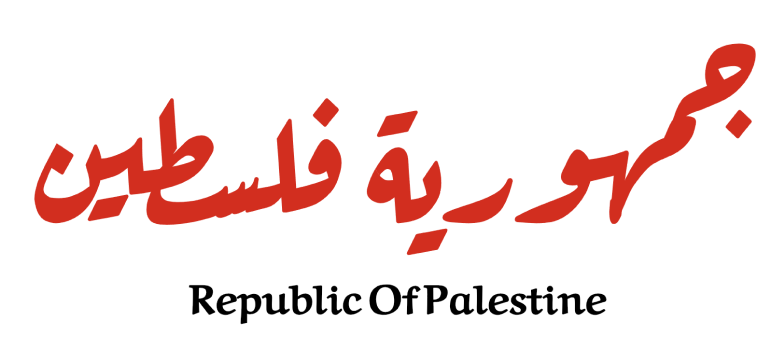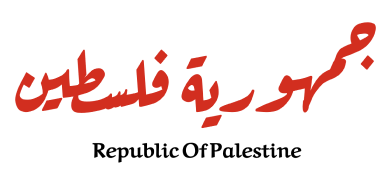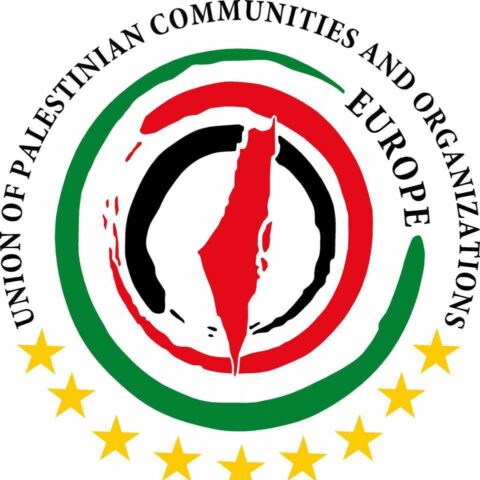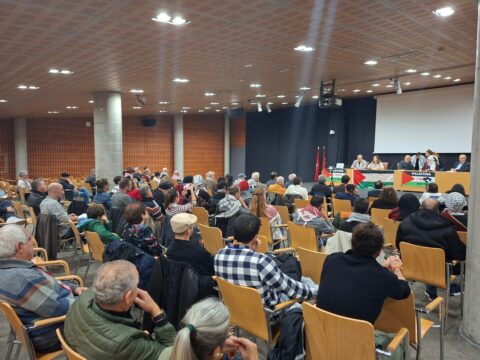By: Ali Anan
At every stage of human history, a crime recurs that reopens the question of existence, justice, and morality, if it exists. It is not merely mass killing, nor is it confined to scenes of brutal violence or documented massacres; it goes beyond that to touch the deep cultural and symbolic fabric of peoples. It is “genocide,” the ultimate crime that seeks not only to kill the human being but also to erase their memory, nullify their presence, and obliterate everything that connects them to place and history.
Today, attempts by Arab and Western media to repeat the word “genocide” in our ears as viewers are increasing, drowning us in images of killing and death and repeating the word “genocide” thousands of times. They try to convince us that if the Zionist war machine stops killing today, the genocide will stop. I truly wonder, is this media really on our side, or is it reducing our cause? It strives hard to dilute terminology, making it easy, palatable words that a person sitting in front of their screen can hear while eating a heavy lunch.
We try to approach the concept of “genocide” from a different angle, one not limited to legal definitions or classical models, but one that attempts to deconstruct this concept within its broader dimensions: cultural, symbolic, economic, and existential. We will trace the crime in its multiple manifestations, from the past to the present, and we will pause at the Palestinian case as a stark model of a continuous genocide—one that does not explode all at once but rather seeps in slowly, under the cover of “conflict” at times and “occupation” at others.
Let us remind the reader of the journey of a people upon whom genocide has been practiced, genocide in all its forms, for a hundred years.
Genocide – The Legal Concept and Historical Roots
When we hear the word “genocide,” images of mass killing, mass graves, or shocking ethnic cleansing operations documented by the media or pursued by international courts immediately come to mind. But genocide, as a legal and historical concept, is much deeper and more comprehensive than those apparent images, and its history is longer than the legal modernity that emerged after World War II.
The Early Roots of the Idea of Genocide
Although the term “genocide” was not coined until the 1940s, its practices date back to the beginnings of civilizations and empires. European colonial empires practiced multiple forms of genocide against indigenous populations in the Americas, Africa, and Asia. For example, in the 16th century, Spanish and Portuguese colonial campaigns caused the genocide of millions of indigenous people in South and Central America, not only through killing but also by spreading diseases, destroying community and cultural structures, and forcibly imposing religion and language.
Likewise, the Ottoman Empire committed massacres against Armenians and Assyrians in the early 20th century, now widely recognized as one of the first organized genocides of the modern era.
Formulating the Legal Concept: From Massacres to Texts
The term “Genocide” was coined in 1944 by Polish Jewish jurist Raphael Lemkin while he was fleeing Nazi Europe. He combined the word from two words: “genos” (Greek for race or group) and “cide” (Latin for killing). Lemkin proposed this term to describe crimes that go beyond individual killing to target an entire group merely for its ethnic, religious, or national belonging.
After the end of World War II, the term was officially adopted into international law, particularly in the United Nations Convention on the Prevention and Punishment of the Crime of Genocide, issued in 1948. The convention defines genocide as:
“Any of the following acts committed with intent to destroy, in whole or in part, a national, ethnical, racial or religious group, as such.”
- The specific acts included in the convention are:
- Killing members of the group.
- Causing serious bodily or mental harm.
- Deliberately inflicting conditions of life calculated to bring about its physical destruction.
- Imposing measures intended to prevent births.
- Forcibly transferring children of the group to another group.
Despite the importance of this legal definition, it is not without problems. It focused heavily on physical and direct acts and neglected the symbolic and cultural dimensions. In other words, the official definition does not include what is called cultural or symbolic genocide, which is represented by erasing language, changing educational curricula, destroying monuments and heritage, obliterating place names, and other policies that target the “memory” of the targeted group. This shortcoming has opened the door for many countries to commit genocide slowly and institutionally without falling under the scope of international law, because they simply don’t fire guns; instead, they besiege, impoverish, marginalize, and rewrite history.
The Problem of Intent
One of the major challenges in legally proving genocide is proving “intent” – meaning that the perpetrator actually aimed to destroy the group. This is difficult to verify, especially in cases of slow or disguised genocide. Therefore, many crimes that meet the elements of genocide are not prosecuted on this basis but are classified as “crimes against humanity” or “war crimes,” which empties the concept of its essence and gives criminals legal and diplomatic cover.
From Law to Reality
Despite more than seven decades since the Genocide Convention was issued, reality bears witness to the international community’s inability to prevent or punish its perpetrators. From Bosnia to Rwanda, and from Myanmar to Palestine, the crimes continue, their tools change, and the questions remain unanswered: Who has the right to name the crime? And who has the power of recognition?
Palestine, as we will see in the following sections, presents a model case of a continuous genocide that has not been named despite the clarity of its tools. This is why we insist on the importance of expanding our understanding of this concept and taking it beyond rigid legal texts.
Genocide as a Cultural Tool—From Erasing Language to Canceling Memory
When we talk about genocide, killing, mass execution, or armed massacres often come to mind. But what if the target was not only the body but also what this body represents? What if the victim was not only a person being killed but also a culture being torn from consciousness, a language being cut from the tongue of generations, and a memory being erased from the earth?
In this section, we expand our perspective towards cultural genocide, considering it the most dangerous, least visible, and most effective tool for implementing a long-term genocide project. Because culture, simply, is what makes a group human, gives it meaning, and connects it to its place and time.
Language: When Memory is Assassinated from the Tongue
Language is not just a means of communication; it is the vessel that carries values, stories, proverbs, songs, and vocabulary linked to place. When a group is prevented from speaking its language, or when another language is imposed on it as “superior” or “stronger,” this is not an educational or pedagogical decision, but an act of symbolic genocide.
In the United States and Canada, children of indigenous peoples were subjected to residential schools that forced them to forget their native languages, and they were punished for using their mother tongues, leading to the disappearance of dozens of languages within just one century. These practices are no less brutal than bullets, because they kill the relationship between a person and their history.
Changing Curricula and Falsifying History
One of the most prominent tools of cultural genocide is rewriting history. When the targeted group is presented as foreign, primitive, or even an enemy, the legitimacy of its very existence is stripped away. School curricula are used as a strategic tool in this context.
In many countries that practice oppression or colonialism, the real history of the place is deleted, and the indigenous people are portrayed as “finished beginnings” or “ineffective minorities,” while the invader or settler is glorified.
For example, in the Palestinian context, the existence of destroyed Palestinian villages is absent from “Israeli” curricula, and the land is presented as if it were without a people, or that the indigenous inhabitants “left voluntarily,” in a blatant falsification of the Nakba. This falsification can only be erased through knowledge, documentation, and continuous cultural recovery by the Palestinians themselves.
Destroying Symbols and Heritage: When Sentiment is Demolished
Architectural, symbolic, and artistic heritage is part of collective memory. Destroying mosques, churches, cemeteries, old houses, and even trees is not just a material loss but a blow to the emotional and psychological connection between people and their land.
In the case of Palestine, the “Judaization” operations practiced in Jerusalem, the Galilee, or the Negev are not limited to changing street names; they extend to erasing the Arab identity of the place: changing village names, obliterating landmarks, converting historical houses into cafes and museums bearing foreign names.
The same thing happened in other cases: in Sarajevo after the war, the controlling forces sought to reshape the city with specific ethnic features, and in Andalusia, Islamic landmarks were hidden after its fall to be reframed within a purely European context.
Stealing Folklore: The Soft Appropriation of Identity
Another aspect of cultural genocide is the appropriation of folklore and presenting it under the name of the colonizer or settler. In Palestine, we see this clearly in the attempts of the occupation to attribute popular dishes (like hummus, falafel, and majadra) to “Israeli heritage” or to present Palestinian popular dress and music as an “ancient Jewish legacy.”
This symbolic theft is not marginal; it is part of an attempt to build a parallel narrative that cancels the original existence and presents the settler-colonial entity as the “sole legitimate owner” of the culture and place.
Censorship and Suppression of Expression
Cultural genocide is also practiced through laws and policies that prevent artists, writers, and musicians from expressing their narrative. In many places, intellectuals and activists are legally pursued because they remind people of their history or revive a language or popular ritual.
In Palestine, some books are banned from entering Gaza or the West Bank, artistic troupes are pursued if they perform patriotic songs, and independent media that documents violations or exposes falsification is besieged.
When Cultural Genocide Becomes a Prelude to Physical Genocide
History clearly shows that cultural genocide often precedes or accompanies physical genocide. When a group is stripped of its symbolic humanity, killing it becomes easier, and violence against it is “justified” as a political or security necessity.
Stripping a people of their history, language, songs, stories, and places is an act of erasure that paves the way for the bloody act to follow. Therefore, defending culture, language, and narrative is not an intellectual luxury but a form of survival and resistance.
Genocide in Palestine – A Renewed Colonial Project: From Massacres to Structural Displacement
When we approach Palestine, we are not facing just an occupation or a traditional “conflict” as promoted by many media outlets and political institutions, but rather a long-term genocide project, with multiple tools, targeting the Palestinian human in their entire being: their body, land, language, memory, future, and even their narrative.
Here, genocide does not happen all at once, nor does it come in the form of large prison camps or mass gallows; instead, it permeates every corner of daily life and bears the hallmarks of settler colonialism, which is not satisfied with controlling the land but seeks to completely erase the people and replace them with another group.
This section deconstructs genocide in Palestine not as isolated events but as a systematic strategic plan, extending from the Nakba of 1948 to the war of comprehensive genocide on Gaza and continuing in more hidden forms in Jerusalem, the West Bank, the Negev, the Galilee, and the diaspora.
The Nakba: The Beginning of Modern Genocide
The Nakba of 1948 is not only the moment of “Israel’s” establishment but also the moment of the systematic destruction of the Palestinian people as an integrated national entity. Within months, more than 750,000 Palestinians were expelled from their villages and cities, and more than 500 villages were destroyed through documented, systematic massacres (Deir Yassin, Tantura, Safsaf, and others).
This genocide was not random; it came within a clear Zionist plan: “Plan Dalet,” formulated by the Haganah organization, which aimed to empty as much land as possible of its Arab inhabitants before declaring the state.
Palestinian homes were destroyed with dynamite, wells were poisoned, return was prevented by force, and village names were erased from maps and replaced with Hebrew names. What happened is not just displacement but a deliberate erasure of existence, i.e., cultural and spatial genocide.
Genocide in the Camp: When the Refugee is Killed Twice
Most refugees who left in the Nakba ended up in temporary camps that turned into permanent places, without citizenship or full civil rights. But the camp was not just a humanitarian tragedy; it was a continuous theater for reproducing genocide in indirect ways.
In Sabra and Shatila (1982), Lebanese Phalange militias, under the direct supervision of the Israeli occupation army, carried out a massacre that lasted for days. More than 3,000 Palestinian civilians—women, children, and men—were killed without anyone intervening.
The Nakba continues in the camps, from Tel al-Zaatar to Jenin, and from Nahr al-Bared to Gaza, where the Palestinian is besieged not only by walls but also by deprivation of recognition and of a future.
Genocide in Jerusalem: Demolishing the Neighborhood, Space, and Identity
In Jerusalem, genocide takes the form of “quiet fragmentation.” Palestinians are systematically stripped of their residencies, and their neighborhoods are demolished under the pretext of “unlicensed construction,” while they are prevented from expanding or renovating.
From the Sheikh Jarrah neighborhood to Silwan, daily life is turned into a legal and psychological battle for survival. Families are besieged with eviction orders and are offered “deals” that mean recognizing the settler as the property owner. At every step, Israeli courts are used as a tool to keep the crimes wrapped in a cloak of “legal legitimacy.”
All of this, along with attempts to Judaize names, surround Al-Aqsa Mosque with settler neighborhoods, and strip away any manifestation of Palestinian sovereignty in the city, serves one goal: creating a city without its original inhabitants through soft societal genocide.
Gaza: The Open Laboratory for Genocide
The Gaza Strip, from 2007 until 2024, has turned into the largest laboratory for genocide in the modern era. The Israeli war on Gaza in October 2023—described by human rights experts as “declared genocide”—revealed the extreme degrees of systematic brutality:
- Over 35,000 Palestinians were killed, most of them women and children.
- Over 70% of the infrastructure was destroyed, including schools, hospitals, and mosques.
- The population was deprived of water, electricity, medicine, and food.
- Medical teams, journalists, and academics were targeted.
Israel used terms like “human animals” and “destroy Gaza completely” in public statements by political and military officials.
Experts from the United Nations, including Francis Boyle, and former rapporteurs like Richard Falk and Michael Lynk, confirmed that what is happening fully fits the definition of genocide in the 1948 convention.
Administrative and Legal Genocide: When Bureaucracy Becomes a Tool of Killing
One of the less visible and more suffocating forms of genocide is that which is practiced through legal and administrative systems. In the West Bank, Palestinians are subjected to a complex permit system to move within their own lands, are deprived of freedom of movement, and are collectively punished.
In Jerusalem, the right of residence is revoked from its inhabitants if they leave the city for more than a specified period. While a Palestinian is prevented from building a house, cultivating their land, or even digging a well, a settler is granted full permission to do as they please.
In this way, the tools of the state—law, courts, police, civil registries—become tools of genocide practiced under the cover of “order” and with the complicity of an international community that claims it does not see.
Starvation and Siege Policies: Slow Genocide
In Gaza specifically, the siege is used as a means of systematic genocide. Since 2007, over two million humans have lived under a choking siege; the occupation controls the number of calories allowed to enter daily, as revealed by leaked Israeli documents.
These policies aim not only to strangle the economy but also to destroy life in its entirety by depriving students of traveling, patients of treatment, institutions of electricity, fishermen of the sea, and farmers of the land.
All these practices, according to reports from organizations like Human Rights Watch and Amnesty International, fall under the definition of “genocide by starvation,” a crime documented in international law.
When Memory Becomes a Theater of Confrontation
The Palestinian today defends not only their body but also their memory. Every destroyed village, every street name that has been Judaized, and every dance, dish, or traditional dress attributed to the occupier is a field of resistance.
The camp, the olive tree, the song, the keffiyeh, and even the dialect have become tools of survival. The genocide where no shots are fired is resisted with storytelling, with song, with posters, with poetry, and with steadfastness in the home despite eviction orders.
Therefore, the genocide project in Palestine is not only a continuous crime but a crime that continuously produces living forms of resistance, making the Palestinian people one of the rare peoples in history that has faced genocide with a will for cultural and national existence.
Recognizing Genocide—Who Has the Power to Name? International Politics and Global Complicity
If genocide is a crime on the scale of human existence, then complicity in its denial or silence about it is not just a moral error but an actual partnership in the crime. What makes genocide more terrifying in our era is not only that it is committed but also that it is hidden, justified, or reframed within misleading narratives that serve the interests of major powers. And here we face a central question: Who has the right to name the crime? And who has the power of recognition?
This section attempts to deconstruct the structure of recognizing genocide politically, legally, and culturally, and reveals the extent of international complicity in selecting “victims worthy of recognition” versus those who are asked to remain silent so as not to be accused of “incitement,” “exaggeration,” or even “anti-Semitism.”
Recognizing Genocide is Not Just a Legal Matter
Formally, things seem simple: if the elements of the crime are available according to the 1948 convention—intent, act, targeting a protected group—then the crime is called genocide, and signatory states must act to prevent or punish its perpetrators. But the reality is more complex.
Recognition of genocide is not based solely on evidence or facts but on balances of power, interests, and geopolitical alliances. In other words, there are genocides that are allowed to be named because they do not threaten Western interests or occur in “politically stable” areas, and there are genocides that are buried because they are committed by a strategic ally or within a narrative that is meant to be protected.
A simple example: until 2021, the United States refused to recognize the Armenian genocide, despite all historical evidence, just to preserve its relations with Turkey—a NATO member.
Israel and the Permanent Exception
‘Israel’ is considered a rare case in modern political history: a state established partly as compensation for a genocide crime (the Holocaust), but which practices a systematic genocide project against another people, in a stark contradiction that can only be explained by considering it supported by an international system that creates for it a “preemptive moral immunity.”
In Western media, the term “genocide” is rarely used to describe what is happening in Palestine, even at the peak of the Gaza war, which international experts described as a full-fledged genocide. In contrast, the term is used easily when talking about the enemies of the West.
Thus, the crime is not measured by the standards of law but by the standards of “the political standing of the perpetrator and the victim.”
The International Criminal Court: Legal Tools in the Grip of Politics
Despite the establishment of the International Criminal Court to prosecute perpetrators of genocide and crimes against humanity, it—in reality—does not possess real independent power. Many major countries, such as the United States and “Israel,” are not signatory parties to the Rome Statute, which protects them from prosecution.
And when actual investigations are conducted, as happened after the Gaza massacre, enormous pressure is exerted on the court, and the weapon of “discrimination” or “politicization” is brandished against it. This is what happened when Prosecutor Karim Khan announced his intention to pursue leaders of the occupation; the court was threatened with economic and political sanctions, as the Trump administration had done before when it pursued the court for daring to investigate war crimes in Afghanistan and Palestine.
Media: Who Narrates the Story, and Who Crafts the Vocabulary?
A large part of the power to name genocide today lies in the hands of major media outlets, which determine for people “how they see” events. And through controlling vocabulary, the crime is presented with mitigated or misleading phrases:
- Instead of “genocide,” they say “conflict.”
- Instead of “ethnic cleansing,” they say “population resettlement.”
- Instead of “killing civilians,” they say “collateral damage.”
- Instead of “erasing a city,” they say “precise security operation.”
In the case of Palestine, the mainstream Western media has promoted the narrative of the occupation for decades and contributes to stripping the Palestinians of their humanity, which opens the door for a genocide committed in stages without being officially recorded as a genocide crime.
The United Nations and International Organizations: Between Impotence and Complicity
Despite documented reports and thousands of documents proving the occurrence of genocide crimes in Palestine, the United Nations rarely calls things by their names. It often confines itself to “concern” and “calls for restraint” without taking concrete actions.
In Gaza, despite the siege, starvation, and massacres, no international sanctions have been imposed on the occupation, and its membership in any international body has not been suspended. All that was reported from the UN were “descriptions” like “humanitarian nightmare” or “unprecedented catastrophe,” without saying “genocide.”
This silence, or deliberate avoidance, is part of the crime.
Is the Law Itself Part of the Problem?
In the end, international law itself must be questioned. Are the conventions established after World War II even effective? Can they protect vulnerable peoples without being subject to power balances? And what is the use of terms like “genocide” if they are only applied to the weak?
Perhaps what we need today is not only to modify concepts but also to rethink who has the right to name pain. To return power to the victims themselves, to the peoples who are being genocided while resisting, to the popular narrative that is not subject to laws or diplomatic channels.
The Duty of Naming: Resistance Begins with Language
To name what is happening in Palestine as genocide is an act of resistance. Because silence is participation, language is involvement, and complicity is not only through silence but also through reformulating the crime in a language that hides it.
In this context, the role of the intellectual, journalist, artist, activist, and historian is to name, to insist on naming, because what is not named is not condemned, and what is not condemned is repeated.
From the Root to Memory—The Continuous Struggle Against Genocide
The story of the Palestinian with the olive tree, with the threatened villages, or with the geography obstructed by numerous checkpoints, is not just chapters from history. It is the story of a human who refused to be a silent victim and resisted attempts to erase them not only by surviving but by creating, by reshaping their identity, and by creating their narrative from the depth of the wound.
We have shown that genocide in Palestine is not a passing event but a comprehensive colonial project. A project that begins with the Judaization of the land and ends with the Judaization of meaning. The house is bombed, but the letter is also pursued. The tree is uprooted, but the embroidered dress, the poem, the melody, and the dialect are pursued. This is what makes the Palestinian struggle unique: a material and cultural struggle, existential and narrative, where the body stands alongside the word, the bullet alongside the story, and the refugee alongside the artist.
And in the face of the genocide project, a living resistance system is formed; its tools change, but its spirit remains one: defending life, meaning, history, and humanity. A resistance that is not satisfied with rejecting denial but presents its existence as an indisputable truth, documented, sung, and tattooed in memory.
From Haifa to Gaza, from Jenin to the diaspora, and from the camps of Lebanon to the alleys of Jerusalem, the Palestinian lives in a constant battle with systematic erasure. But they have not lost. Rather, they have made from defeat a path to determination, from rubble a new ascent, and from pain a collective ache that is sung, taught, painted, and inherited.
And in a time where “who is the victim” is determined by centers of power, the Palestinian imposes their narrative despite killing, siege, and deletion from maps and curricula. And for this reason, recognizing Palestine today is not only a political stance but an ethical, human, and cultural one, because it is a recognition of the right to life in the face of a system that has known only the language of genocide.
In conclusion, the survival of the olive tree is not only the survival of a tree but also the survival of a people who chose to have roots, not a shadow. A people who, the more they are besieged, the more they grow, transforming from a state of Nakba to a state of resistance. A resistance that does not fade.
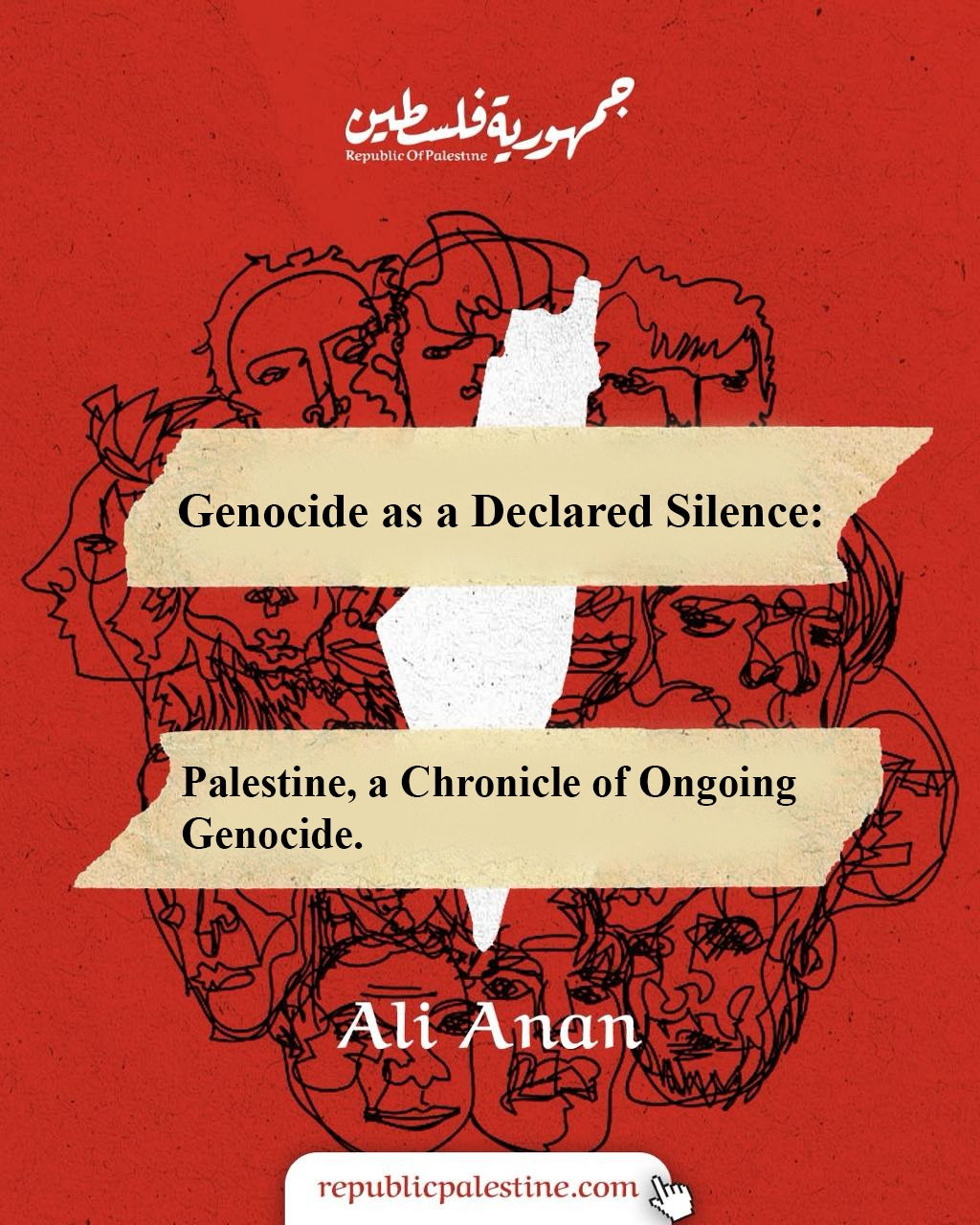
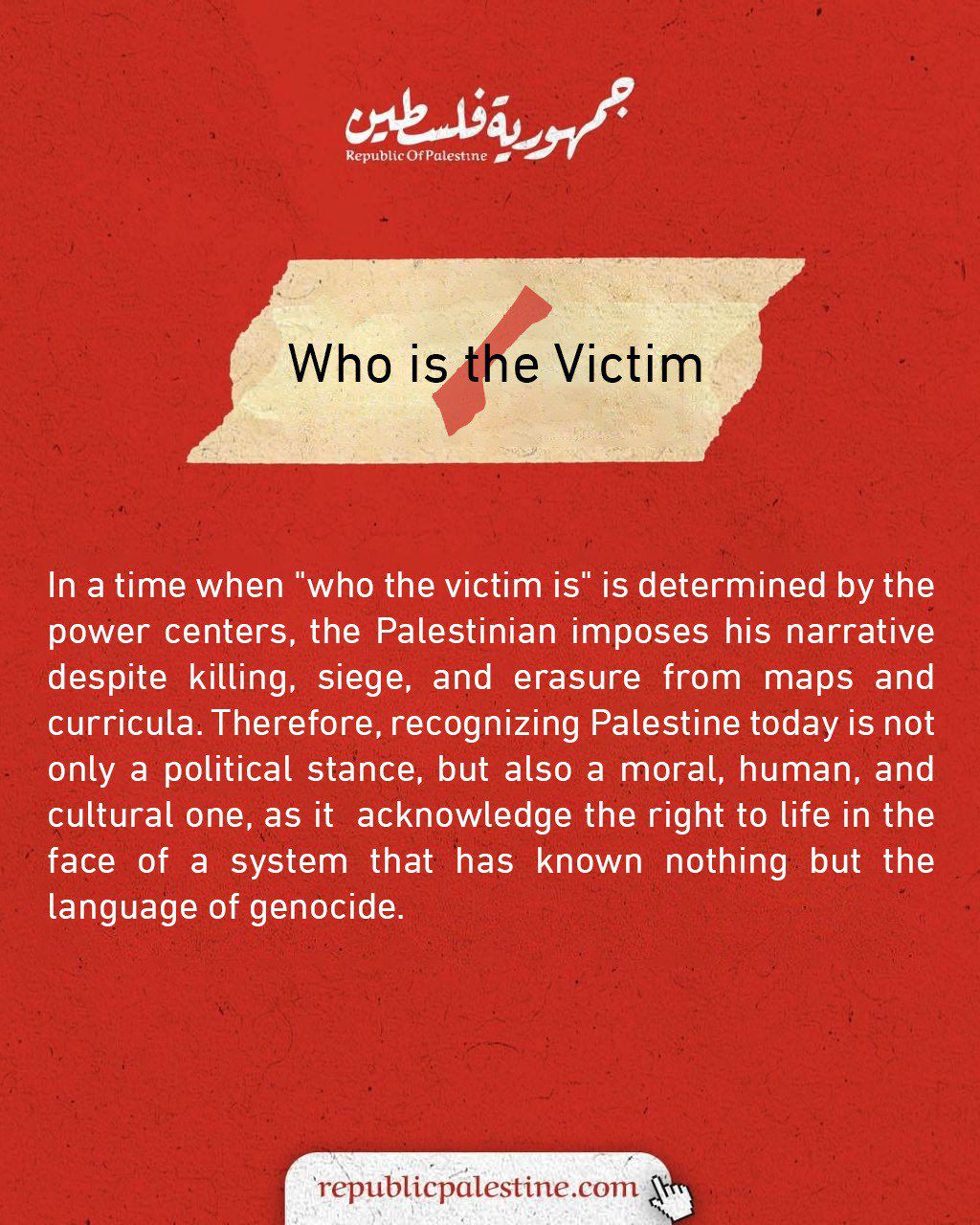
Ali Anan is a Jordanian screenwriter and playwright. He worked as the Director of Content Development at the Arab Center Group, which specializes in producing drama series and television programs. He has written numerous theatrical scripts that have been produced in collaboration with various theater directors, in addition to screenplays for short films in Jordan and the Arab region. He holds a bachelor’s degree in Mechanical Engineering and works in the artistic and creative fields. Alongside his writing, he also manages the Naqsh Cinema Club in the Jordanian capital, Amman, since 2020.
